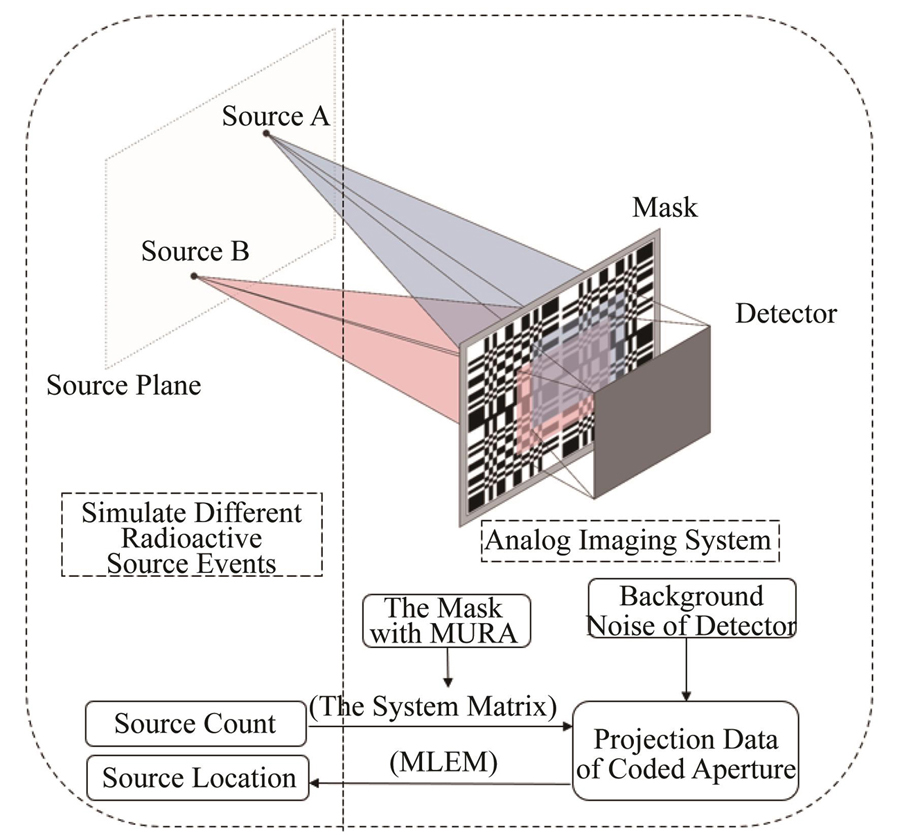Remote, large-scale, rapid and real-time detection of radioactive sources is of great significance for industrial investigation and environmental remediation. Gama camera can extract information such as the location, intensity and category of radioactive substances from a long distance, and is an effective detection tool. Due to the small detector area and the limited field of view (FOV) of the coded aperture, the detection efficiency of the current coded aperture γ cameras is low.
This study aims to propose a prototype of large area and highly sensitive coded aperture gamma imaging system based on a SPECT probe.
First of all, the Hamamatsu BHP6601 single photon emission computed tomography (SPECT) probe with large area of 510 mm×390 mm and high intrinsic spatial resolution of 3.55 mm was selected as the detector of the system. Based on the detector by tectonic analysis, modified uniform redundant arrays (MURA) coding nesting mode was adopted with a rank of 23 and each unit aperture size of 22.1 mm×17 mm. Then, the system transmission matrix is obtained by using the gamma rays emitted from the radioactive sources at different angles of the FOV to reach the detector geometry through the coded aperture. Then, the geometric relationship between the radioactive source and the system is used to analyze and construct different radioactive source events. Next, the cumulative probability based on the system transmission matrix simulates the photon distribution on the detector. Finally, using Maximum Likelihood Expectation Maximization (MLEM) algorithm is built source image.
The results indicate that the non artifact field of view (NAFOV) is 57.32° in the X direction and 47.3° in the Y direction; and the spatial angle resolution is 2.94° in the X direction and 2.28° in the Y direction. The γ camera can accurately locate 3.7×107 Bq 137Cs single point source in 1 s at the distance of 18 m and 2 s to accurately reconstruct the position of 1.11×106 Bq 137Cs at the distance of 4 m away from the camera.
The γ camera of this study has a high detection capability for distant or low-activity radiation sources in large range.




